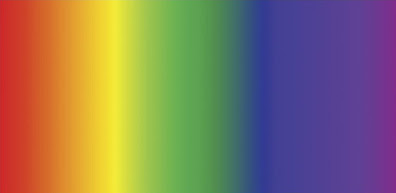What Is the Visible Light Spectrum?
The visible light spectrum is the portion of the electromagnetic spectrum that can be seen by the human eye. It includes all the colors of the rainbow, as well as colors that are not typically seen in rainbows. The visible light spectrum ranges in wavelength from about 400 nanometers (violet) to 700 nanometers (red). The colors of the visible light spectrum, in order of increasing wavelength, are as follows: violet, blue, green, yellow, orange, and red.
⇒Colours of Visible Light Spectrum
The colors of the visible light spectrum, in order of increasing wavelength, are:
- Violet
- Blue
- Green
- Yellow
- Orange
- Red
It's important to note that the exact boundaries between the colors of the visible light spectrum can vary depending on the context, and different sources may list slightly different ranges of wavelengths for each color. However, these colors are generally considered to be part of the visible light spectrum, and together they make up the "white light" that we see in sunlight and other light sources.
⇒Colour and Temperature
The color of an object is related to its temperature, with warmer objects tending to emit light at the red end of the visible spectrum and cooler objects emitting light at the blue end of the spectrum. This relationship is known as Wien's Law, which states that the peak wavelength of an object's thermal emission is inversely proportional to its temperature.
For example, a hot stove burner may appear red or orange, while a light bulb may appear white or yellow. Similarly, stars are classified by their surface temperature, with the hottest stars appearing blue, and the coolest stars appearing red.
The relationship between temperature and color is not a perfect one. Some objects, such as those that emit light due to chemical reactions, may not follow this relationship. Also, other factors, such as the chemical composition and surface roughness of the object can affect its color.
Frequently Asked Questions – FAQs on Visible Light
Here are some common questions and answers about visible light:
Q: What is visible light?
A: Visible light is a type of electromagnetic radiation that can be seen by the human eye. It has a wavelength range of approximately 390 to 700 nanometers.
Q: What colors make up visible light?
A: The colors that make up visible light are red, orange, yellow, green, blue, indigo, and violet. These colors are often referred to as the "ROYGBIV" colors.
Q: What is the difference between visible light and infrared light?
A: Visible light has a wavelength range of approximately 390 to 700 nanometers, while infrared light has a wavelength range of 700 nanometers to 1 millimeter. Visible light can be seen by the human eye, while infrared light cannot.
Q: What are some common sources of visible light?
A: Some common sources of visible light include the sun, light bulbs, and flames.
Q: What is the speed of light in vacuum?
A: The speed of light in vacuum is approximately 299,792,458 meters per second.
Q: How does the color of an object relate to the colors of light it reflects?
A: An object's color is related to the colors of light it reflects. For example, a red apple appears red because it reflects red light and absorbs all other colors of light.
Q: How does the angle of incidence affect the angle of reflection?
A: The angle of incidence and the angle of reflection are related by the law of reflection, which states that the angle of incidence equals the angle of reflection. This is true for both light and sound waves reflecting off a smooth surface.
Let me know if you have more questions or if there is a specific topic that you would like to know more about.





If you have any doubts, please let me know